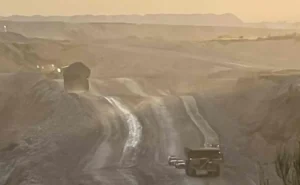The term “climate emergency” has become ubiquitous. The catch-cry has captured the imaginations of both policymakers and the public, but its origins began with a 2008 book by committed environmentalist and climate pioneer Philip Sutton, who passed away last week aged 71.
Australia’s environment and climate movements are in mourning for Philip, a trailblazing activist and strategist over a career that spanned more than four decades.
Philip was a whole-systems, big-picture thinker, a designer of detail, and a pioneer of the climate emergency movement in Australia and internationally.
Philip’s work touched many aspects of Australia’s climate and environment movements; his influence and associations extended across organisations including the Australian Conservation Foundation, Environment Victoria, Breakthrough – National Centre of Climate Restoration, Beyond Zero Emissions and many more.
His approach was a unique blend of warm-hearted compassion, optimism for a better world, and hard-headed realism about the task at hand.. He was a man that communicated with influence, and his work has touched the lives of many.
Born in Sydney in 1951, Philip was strongly influenced by his mother, Fay, a committed environmental activist in her own right, who served as a Councillor for the Australian Conservation Foundation for over 30 years. It was an influence that would help shape Philip’s contributions over 40 years.
After initially studying veterinary science, Philip abandoned his degree to work on local environment and conservation causes, kickstarting his lifelong work in the environmental and climate movements.
In 1980, he published the book Victoria’s nuclear countdown: State Government plans for a nuclear Victoria, which catalysed the community campaign that resulted in Victoria’s ban on nuclear power. By 1991 Philip had been identified as one of the 20 most influential Victorians working on environmental policy.
He went on to work with and initiate numerous organisations, tackling the challenge of climate change and ecological breakdown, making a lasting impact not only on policy, but on the people who knew him and worked with him.
Philip was the architect of the watershed Victorian Flora and Fauna Guarantee Act 1988, which became the model for future wildlife protection legislation throughout Australian jurisdictions. The Act highlighted prevention as a characteristic of strong wildlife protection legislation, ensuring species do not become threatened in the future. It was the first legislation of its kind in Australia.
Philip advised both federal and Victorian governments on issues including the timber industry, endangered species, sustainable development, and the emerging renewable energy industry. He also authored two model Acts of parliament on addressing the climate emergency and transitioning away from fossil fuels.
Philip’s quest to turn the seemingly impossible into the possible, and the possible into the probable, made a lasting impact on many campaigners and activists.
His climate work was unapologetically radical in nature. He argued that climate change is an threat to life on Earth as we know it and that, as such, an emergency mobilisation was needed to combat it. He saw climate change’s devastating future with a clear-eyed realism and solutions necessary for “maximum protection”, not just solutions that were palatable. This meant challenging the dominant school of thought that “reform as usual” would be enough to address climate change, and he advocated for fast cooling the planet.
It was this conception of a society-wide mobilisation against climate change that was codified in Philip’s 2008 book Climate Code Red: The case for emergency action, co-authored with David Spratt. Climate Code Red codified the “climate emergency”, and positioned climate change as an issue not just of the environment, but of a “safe climate” for the world’s peoples.
Philip railed against the idea that 2°C of warming was an acceptable goal, arguing that such warming could result in the preventable deaths of billions of people, millions of species, and the breakdown of many social and economic systems. This analysis, outlined in Climate Code Red, has been validated numerous times since its publication over a decade ago.
The news of Philip’s unexpected death from a suspected heart attack has left family, friends and supporters grief-stricken. Philip’s warm, unpretentious, kind and intelligent nature earned him the support and respect of the many people that he worked with throughout his long career.
Philip Sutton was regarded by many as a titan of the Australian environment and climate movements. Awareness of his contribution will grow as the need for urgent action becomes more pressing. He will be immensely missed at a critical time for our planet.
Philip is survived by his two children, Daniel and Joey.
A public commemoration to honour his legacy is being planned.










